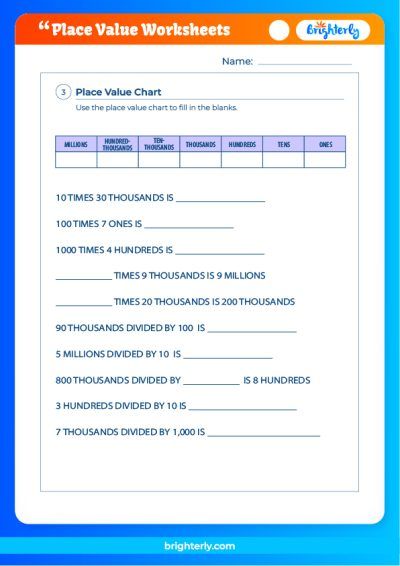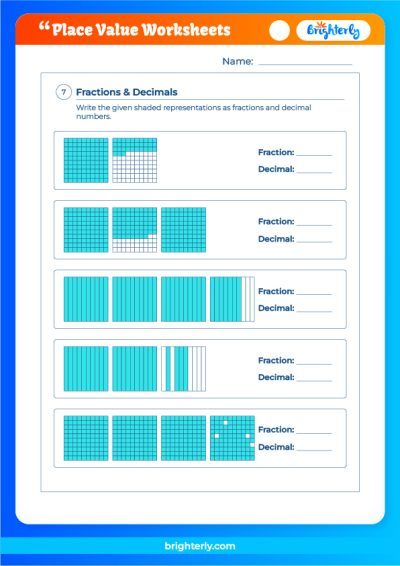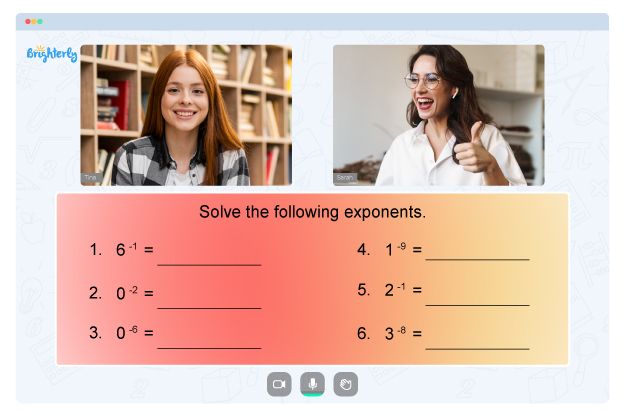Place Value – Definition with Examples
Updated on January 10, 2024
Place Value is an essential and fundamental concept in mathematics that enables us to comprehend and work effectively with numbers. At Brighterly, we understand the importance of mastering place value for building a strong foundation in mathematics, as it plays a critical role in arithmetic operations, problem-solving, and overall number sense. In this comprehensive article, we will delve deep into place value, unraveling its various aspects and significance.
What is Place Value?
Place value is the system of attributing a value to a digit in a number depending on its position. It is a crucial concept that facilitates our ability to read, write, and comprehend numbers, making calculations more straightforward and efficient. Place value ensures that each digit in a number contributes differently based on its position. For instance, consider the number 7,548. The place value of 7 is 7,000, as it is in the thousands place; the place value of 5 is 500, as it is in the hundreds place; the place value of 4 is 40, as it is in the tens place; and finally, the place value of 8 is 8, as it is in the ones place.
Understanding place value is the cornerstone of the base-10 numeral system, which is the most commonly used number system worldwide. By learning place value, children develop a strong foundation in mathematics, enabling them to tackle more complex topics with ease. At Brighterly, we focus on teaching place value concepts in a fun and engaging manner, ensuring that children develop a clear understanding and appreciation of the importance of place value in their mathematical journey.
Don’t forget to use math worksheets for kids available on the Brighterly to further enhance your skills!
Place Value Chart
A place value chart is a visual representation of the positions of digits in a number. It helps us understand the value of each digit and makes it easy to compare and manipulate numbers. A typical place value chart consists of columns for units, tens, hundreds, thousands, and so on.
Place Value Meaning
The meaning of place value is the value assigned to each digit based on its position within a number. As we move from right to left, each position represents a power of 10. For example, in the number 7,651, the place value of 7 is 7,000 (7 * 10^3), the place value of 6 is 600 (6 * 10^2), the place value of 5 is 50 (5 * 10^1), and the place value of 1 is 1 (1 * 10^0). This system is essential for understanding how numbers work and for performing calculations.
Comparison Between Indian and International System
The Indian and International systems of place value differ in the way they group digits. In the Indian system, digits are grouped in pairs after the hundredth place, whereas in the International system, digits are grouped in threes. For example, the number 5,678,901 is written as 56,78,901 in the Indian system and as 5,678,901 in the International system. This difference affects the naming of larger numbers and the way they are read aloud. You can learn more about the Indian and International systems of place value by visiting this link.
Place Value for Decimals
Place value for decimals works similarly to whole numbers but extends to the right of the decimal point. Each position to the right of the decimal point represents a negative power of 10. For example, in the number 0.123, the place value of 1 is 1/10 (1 * 10^(-1)), the place value of 2 is 2/100 (2 * 10^(-2)), and the place value of 3 is 3/1000 (3 * 10^(-3)). Understanding place value for decimals is crucial for working with fractions, measurements, and other real-world quantities.
Place Value in Numbers
Place value in numbers is the cornerstone of the base-10 numeral system, which is the most commonly used number system worldwide. Understanding place value in numbers allows us to represent and manipulate numbers efficiently. For example, when we add or subtract numbers, we align them according to their place values and perform operations on corresponding digits.
Face Value in Maths
Face value is the value of a digit itself, irrespective of its position in a number. In other words, the face value of a digit is the same no matter where it appears in a number. For example, the face value of 5 in the numbers 5, 25, 354, and 5,807 is always 5.
Difference Between Place Value and Face Value
The main difference between place value and face value is that place value depends on the position of a digit within a number, while face value is the value of a digit itself, independent of its position. Place value helps us understand the overall value of a number and perform arithmetic operations, while face value is a more basic concept that shows the value of individual digits.
Solved Examples on Place Value
To better understand place value, let’s look at some solved examples:
-
Find the place value of 7 in the number 4,783.
In this number, 7 is in the hundreds place. So, the place value of 7 is 7 * 10^2 = 700.
-
Determine the place value of 2 in the number 0.023.
In this number, 2 is in the hundredths place. So, the place value of 2 is 2 * 10^(-2) = 2/100 = 0.02.
Practice Problems on Place Value
Try solving these practice problems to test your understanding of place value:
- Find the place value of 3 in the number 3,762.
- Determine the place value of 4 in the number 0.049.
- Calculate the place value of 6 in the number 16,205.
Conclusion
Place value is an indispensable concept in mathematics that forms the foundation for understanding and working with numbers effectively. By mastering the intricacies of place value, students can perform arithmetic operations more efficiently, read and write numbers accurately, and develop a robust sense of number sense. At Brighterly, we emphasize the importance of place value in our curriculum, ensuring that children build a strong mathematical foundation from the very beginning.
Through our innovative teaching methods, interactive activities, and engaging content, Brighterly strives to make learning place value an enjoyable and memorable experience for our young learners. We believe that by fostering a deeper understanding of place value, we are empowering students to conquer more complex mathematical concepts with ease and confidence.
As students progress through their mathematical journey, the significance of place value becomes increasingly apparent. From basic arithmetic operations to advanced problem-solving, place value remains a vital tool that bolsters mathematical comprehension and critical thinking. It is our mission at Brighterly to equip children with the knowledge and skills necessary to navigate the fascinating world of mathematics, starting with the mastery of place value.
Frequently Asked Questions on Place Value
What is the place value of 0 in a number?
The place value of 0 in a number is always 0, no matter its position. Zero serves as a placeholder, indicating that there are no units, tens, hundreds, etc., in that position.
Why is place value important?
Place value is important because it allows us to represent and manipulate numbers efficiently. It also forms the basis for arithmetic operations, problem-solving, and overall number sense.
How is place value used in everyday life?
Place value is used in everyday life when we read and write numbers, count, measure, and perform calculations. It helps us understand the value of digits in different positions and makes it easier to perform operations like addition, subtraction, multiplication, and division.
How can I teach place value to children?
Teaching place value to children can be done through various methods, such as using base-10 blocks, place value charts, manipulatives, and real-life examples. Engaging activities and games can also help children develop a strong understanding of place value concepts.
What is the difference between place value and expanded form?
Place value refers to the value of a digit based on its position in a number, while expanded form is a way of writing a number by breaking it down into its individual place values. For example, in the number 543, the place value of 5 is 500, the place value of 4 is 40, and the place value of 3 is 3. The expanded form of this number is 500 + 40 + 3.






